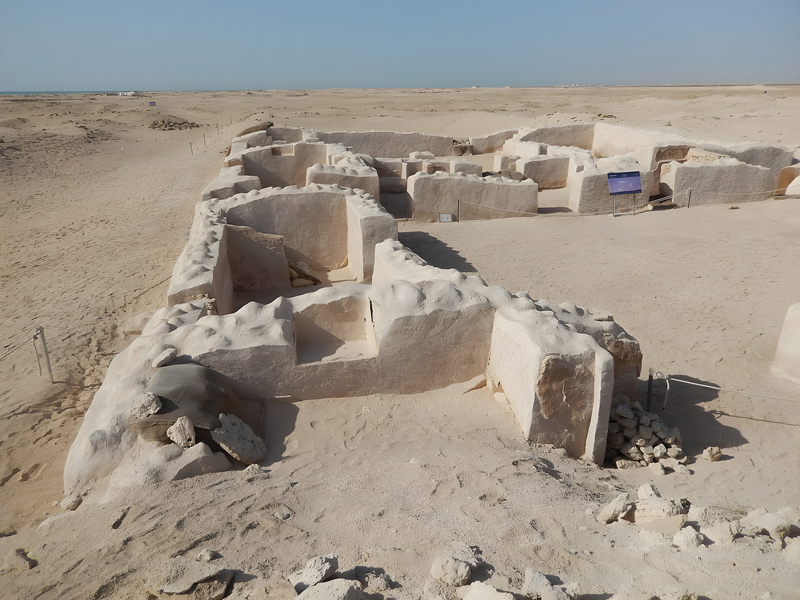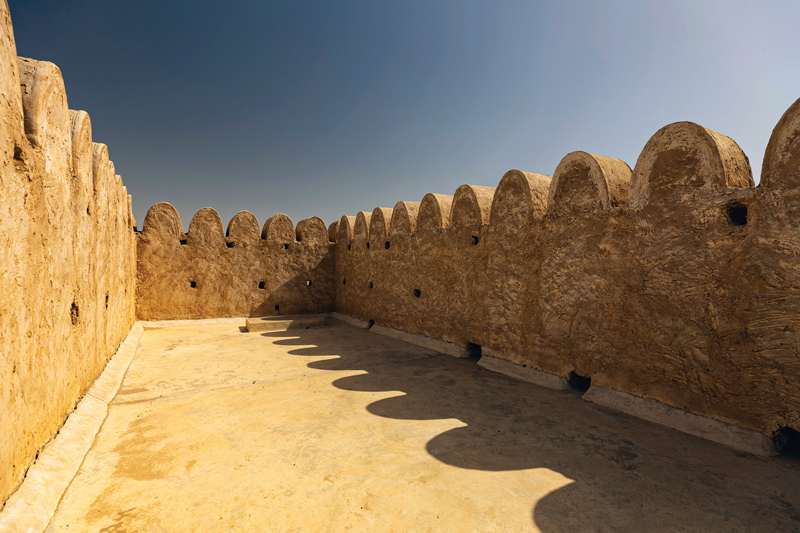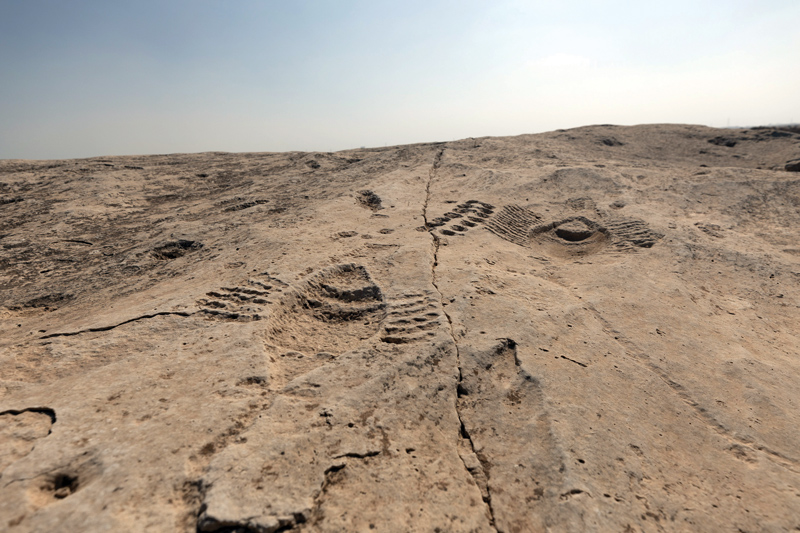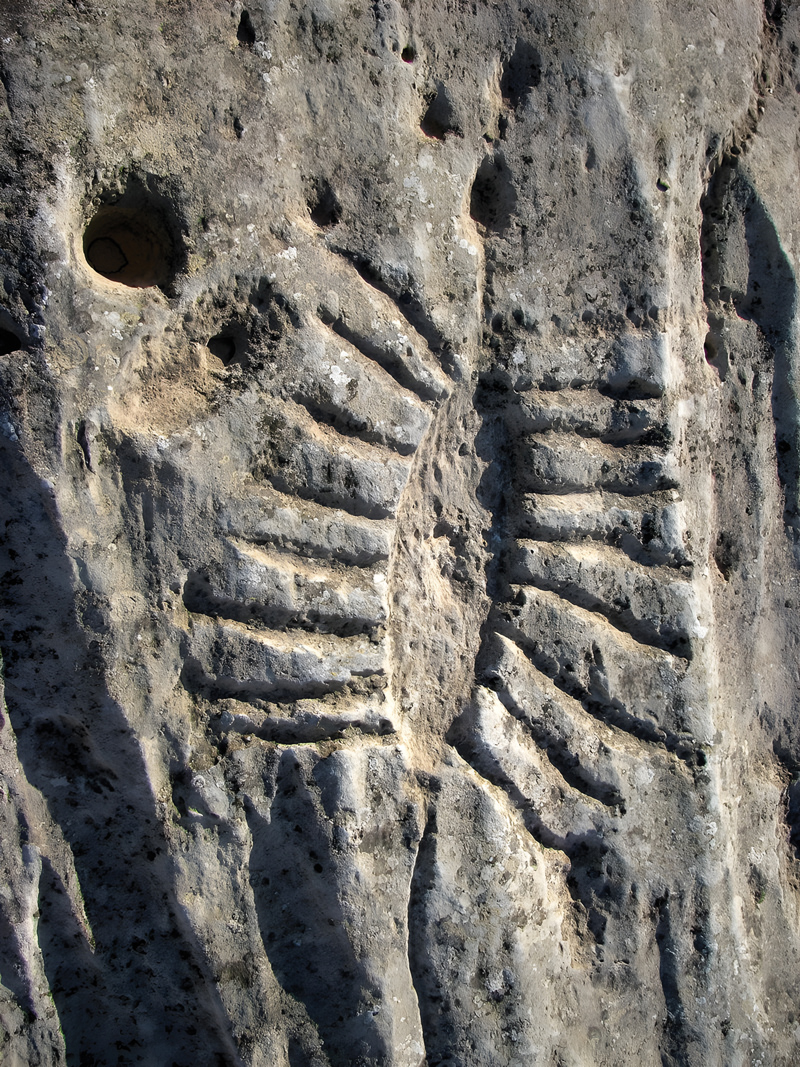The history of Qatar as the nation we know today dates back to 6000 B.C.
Traces of the first settlers in the Qatari peninsula, located in front of the Persian Gulf, indicate that they were settled in small isolated villages that, in order to subsist, sowed crops using tools made of stone; in addition, they made decorated pottery, of which traces have been found.
These settlements are distinguished as the "Ubaid period", named after a site discovered in southern Mesopotamia, in the place where this type of pottery was found for the first time. This indicates that the ancient inhabitants of that area had ties to the area now known as Iraq. From evidence of inland wells and the cultivation of wild cereals, it is believed that the temperature was much more humid than today.
Of the early maps of Qatar, there is a version of Claudius Ptolemy's geographical chart (100-170), on display in the National Library of Qatar, which notes 'Cathara' as a fort.
Bronze Age remains located near Al Khor on the east coast, especially on Bin Ghannam Island or Purple Island, included large quantities of murrices (small sea snail) shells, used to make a violet dye prized by royalty. In the far west, a Bronze Age settlement was discovered at Ras Brouq and sherds of Barbar Ware pottery (named after a site in Bahrain) dating to 3000 B.C. The largest concentration of Iron Age sites is on the northwest coast of Qatar at Umm al-Ma'a; finds include more than 5,000 stone burials dating from 300 B.C. and A.D. 300.
In 628, Mundhir bin Sawa Al Tamini, the Christian ruler of the Al Hasa region that included the Qatari peninsula, converted to Islam. Only a few sites have been identified from this early Islamic period, suggesting that the peninsula was sparsely populated at that time. During the Umayyad period, between the 7th and mid-8th centuries, Qatar was a center of camel and horse breeding.
Pearl Diving in Qatar
The reign of the Abbasids, between the 8th and 13th centuries, witnessed the growth of pearl fishing along the rich oyster beds in Qatari waters. Archaeological remains from the late Umayyad period were discovered at Yoghbi in northwestern Qatar, while remains of dwellings, two mosques and a fortified mansion from the early Abbasid period, from the 9th and 10th centuries, were found in nearby Murwab in the northeast.
Between the 10th and 15th centuries, the inhabitants apparently moved to the Iranian side of the Gulf. In Qatar, two sites from this period were located at Ruwayda and Freyha on the northwest coast and remained inhabited until the 18th century.
The arrival of commercial sea routes
The voyage of the Portuguese explorer Vasco da Gama across the Cape of Good Hope in South Africa in 1497 established a European sea route to the East. This allowed for the first time the establishment of permanent trading bases in the Persian Gulf. In the 16th and early 17th centuries, the Ottomans, Safavids and Portuguese fought over the territory of Qatar.
Portuguese explorers mentioned Qatar during the 1580s and 1590s, and there is a depiction of Qatar as a single fort in Luis Lazaro's 1596 world atlas. In 1602, when the Portuguese lost Bahrain to the Safavid Empire, Qatar became important to the Lusitanians. After this date, the Portuguese used Qatar as a base to plunder Bahrain, as well as to impose taxes on merchants traveling in the Gulf. Excavations at Ruwayda revealed a Portuguese fortification that could be the same one mentioned by the Lusitanian sources.
The Ottomans also had a presence in Qatar in the 1550s, with a great rivalry with the Portuguese, who from there controlled Bahrain. In the 1670s, the sheikh of the Banu Khalid tribe expelled the Ottomans from Al Hasa, which probably eliminated all Ottoman manifestations from Qatar. From that point on, various seafaring tribal entities flourished, ruling a swath of land stretching across Qatar and Kuwait.
In the 18th century, members of the Utub tribal confederation, which included various groups such as Al-Sabah, Al-Khalifa, Al-Fadhil and Al-Jalahimah, took control of Kuwait, Qatar and Bahrain. Although most Utub groups originated from central Arabia, at some point they became seafaring and adopted the ship as their main means of transportation.
There is scant historical and archaeological evidence of 17th century sites along the northern coast of Qatar. One of the most significant changes in the 18th century was the virtual disappearance of the Portuguese population and the arrival of traders from the Netherlands, France and England, nations that had been present in the Persian Gulf during the 17th century, their rivalry increased during the 1700s, resulting in a British monopoly in the early 19th century. This laid the foundation for Qatar's modern history.
The remains today
Today, the heritage of the ancient inhabitants west of the Qatari peninsula can be seen in the remains of rock carvings at Al Jassasiya, one of the most important archaeological sites in Qatar. It is a stone carving site comprising 874 petroglyphs, believed to believed to date from the Neolithic period (6000 BC to 4000 BC).
It is a 2,300 ft. wide rocky desert landscape with various carvings, discovered in 1957; the rock carvings at Al Jassasiya feature various shapes, including fish, ostriches and clefts. There are carvings of bagalas, the boats that remain in use to this day and offer a direct link to a distant past. It is believed that the indentations were used to store pearls or were ancient board games known as Al Haloosa or Al Huwaila.
The etymology of Al Jassasiya offers a clue as to its historical purpose: it means in Arabic "hill" or "the searchers," and being in an elevated area overlooking the sea, the area was most likely used to guard vessels entering Qatar.
Another finding at Al Jassasiya is the remains of residential settlements, where ceramics dating back to the 15th century were found The site, which offers legacies of the past, is still an enigma decades after its discovery. Nearby is the beach of Al Jassasiya, a hidden oasis, with mangroves providing a green backdrop to the white sand and shallow, crystal-clear waters, where this civilization flourished.
Fort Al Zubarah, belonging to the 20th century, is a recent revelation and since 2013 has been Qatar's only Unesco World Heritage Site. It was built next to the coastal walled city of Al Zubarah (founded in 1760), an important pearl-harvesting center of the Persian Gulf in the 18th century. Its 3.2 ft. thick walls offered protection from invaders and helped keep the rooms cool during the summer; inside it housed residential palaces, mosques, houses, fishermen's huts, streets, a harbor, a canal and cemeteries. On the walls of the original buildings were found 15 drawings engraved in plaster representing commercial vessels used at that time in the gulf and the Indian Ocean; coins, diving weights and ceramics from the 18th century were also discovered.
Because of its location by the sea, the Qataris needed a watchtower for approaching ships and in the early 1900s erected the 52 ft. Barzan Towers, following traditional Qatari architecture. It is believed that they were used as an observatory of the moon and from there to determine the lunar calendar. Unlike other forts, they were built on several floors, giving them the name Barzan, which in Arabic means "high place".
The Barzan Towers were built between the 18th and 19th centuries by Sheikh Mohammed bin Jassim Al Thani, founder of Umm Salal Mohammed village in the suburbs of Doha.
Barzan is the name given to the 46-feet-high western tower; it consists of three levels and, with its distinctive T-shape, is considered unique in that region of the Gulf. The eastern tower, Al Burj Al Sharqi, also erected with stones and coated mud, has a more typical rectangular shape. Most early settlements had one or more towers of cylindrical or rectangular shape, usually built of stones.
According to local oral traditions, the towers may have been used as lookouts to watch over their water sources and wells. Another version describes them as an observatory to determine the dates of the lunar calendar.
Northwest of Doha is the Al Rekayat fort is one of several desert strongholds dating from the 19th century. It was one of the few restored, retaining its original structure; remnants of the original can be seen in the courtyard.
The name Al Rekayat means "well" in Arabic; therefore, it is believed that it was erected to protect the essential source of water. The existence of a freshwater well in the shelter and the scattered remains of a nearby village support this assumption. In addition, the fortification was a safe place for the nearby population in case of possible conflicts between tribes.
Fort Al Rekayat follows the typical plan of a desert fortress: it has three rectangular towers and one round tower. Lined up around the three sides of the large central courtyard are narrow rooms without windows, but with doors that open onto the courtyard. The only entrance is located in the south wall.
The port city of Al Khor flourished in the early 20th century as an important fishing and pearl center, protected by a bastion composed of a set of three towers guarding the entrance. The towers of the old port were used to monitor ships and protect access to the historic well of Ain Hleetan, the main source of water that made life in Al Khor possible.
The three towers located in Al Khor, along the coastline, show a very similar structure: cylindrical in shape, with thick stone walls. The guards could stand on the platform of the towers; a sort of balcony accessible only by climbing the outer walls with the help of a rope.
Text: Felipe Gómez ± Photo: ediciones boreal, wikiwand, qatar tourism, wpt







